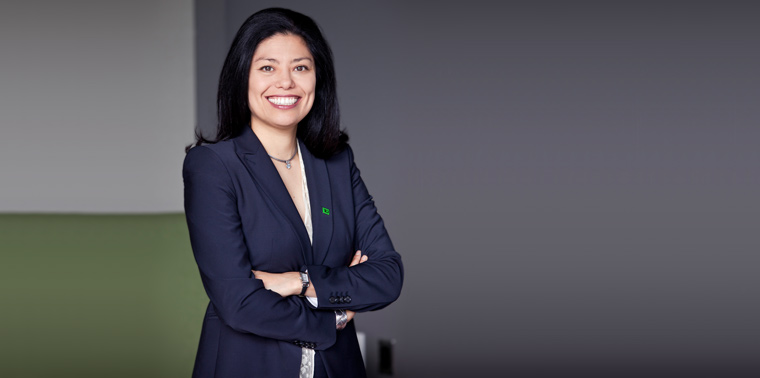This interview originally appeared in Ensia magazine here.

The connection between banking and the environment may not seem obvious at first, but it runs deep. To learn more, Ensia recently spoke with Diana Glassman, head of Environmental Affairs for TD Bank, a retail bank with approximately 1,300 branches in the eastern United States. Over the course of our conversation we discussed TD Bank’s environmental initiatives, criticism of the banking sector for financing fossil fuels, the intersection of energy and water, and more.
Todd Reubold: Part of your role at TD Bank involves identifying opportunities to expand the company’s environmental commitment. Can you tell me more?
Diana Glassman: TD Bank seeks to be an environmental leader. This is a belief held at the top. It’s the right thing to do, and it also has business benefits. There are revenue benefits, there are brand benefits, there are employee benefits, there are reputation benefits, all of which are important to a growing business.
DG: The first is our own emissions. We’ve made a commitment to reduce our greenhouse gas emissions by 25 percent by 2015, per employee. Another area is paper. We have made a public commitment to reduce our paper consumption by 20 percent by 2015. And third, we work with local organizations through our TD Forests initiative to promote urban greening in our communities. We see trees and open spaces as central to what makes a community thrive. It’s more than beautification; it‘s about making the community strong.
Also, we have an amazing green building program. We have the country’s first net-zero energy bank branch, down in Florida. All of our new expansion sites — and we’re building lots of them up and down the East Coast — they‘re all certified LEED.
We already are the first large North American-based bank to be carbon neutral. We did that back in 2010. We want to keep reducing our actual output per person.
TR: What’s the role of the banking sector—or TD Bank in particular—in addressing vexing environmental challenges?
DG: The bank has a very important role in society. It is a multiplier. It provides financing. It asks questions of its clients before providing them with money. It’s important that if a company or individual comes to us, they need to know that we will look at their compliance with environmental standards, and think about the environment as it relates to their risk profile and the like. It’s very, very important. It’s our responsibility to make sure that this is done right.
TR: The banking sector—including TD Bank—has been criticized for financing fossil fuels. What’s your response?
DG: We all share the same society. We all share the same concerns. We’re all concerned about energy. We’re all concerned about food. We’re all concerned about living in a healthy environment. Society is trying to figure out how to deal with all of these and the trade-offs, and society hasn’t quite figured it out. The world needs energy. Things get really bad really quickly if you don’t have energy. We support energy diversity – this includes everything from reducing impacts of fossil fuels to the renewable energy sector. We believe in a carbon tax. We want to do what we can to get the public dialogue going constructively, and continue from there.
TR: You’re an expert on the intersection of energy and water use. What do you mean when you say, “What’s green is not necessarily blue”?
DG: The environment and the water-energy-food nexus, it’s all connected. When we make decisions about energy, we generally focus on one or two dimensions, but we don‘t really think about that other dimension, the water dimension.
We think about water in three ways. One, how much you consume or how much is taken away from its source. Two, how much is withdrawn but gets sent back. And lastly, the pollution impact. When you think of energy, you have to think about all three. For example, conventional solar thermal plants consume more [water] than most coal-fired power plants that produce the same amount of energy output. And where do we find solar thermal plants? Arid areas.
People also don‘t appreciate how much energy is embedded in water. It takes so much energy to move water around, heat it, clean it and process it. We’ve got to cut it.
TR: Can you tell me a bit more about the importance of engaging your company’s employees in hitting your environmental goals?
DG: We want to make environment part of the thought process in any business decision we make. In order to do that, we first have to capture the hearts and minds of our employees. How do you do that? It’s “The 4Hs of Environmental Engagement (SM) – Head. Heart. Hands. Horn (SM).” Head stands for what many people call awareness and education. Heart is for the passion factor. Hands signifies when we get employees to take action, whether it’s go out and plant trees, turn their taps off, turn off lights, whatever. And lastly, Horn means how to get believers to go and inspire other people. Research shows that people believe other people. Word of mouth is key.
You have to meet people where they are. There‘s going to be one sub-group that’s the super greenies. There’s going to be another group that kind of likes it. There are going to be senior executives who are going to relate differently. You tailor your tactics accordingly, and take each group through The 4H’s.
But the real question is, how does this transcend companies? How do we engage the world? If we can engage the public to think about their demand patterns, their own personal supply chains—that, to me, is a critical leverage point.
TR: What’s your hope for the future?
DG: I really am optimistic. I do see a generational trend, a corporate trend. I see governmental trends. There are lots of reasons why people should be positive about the future.
